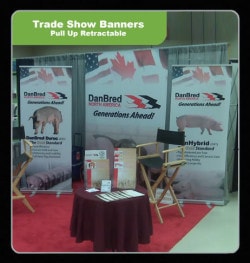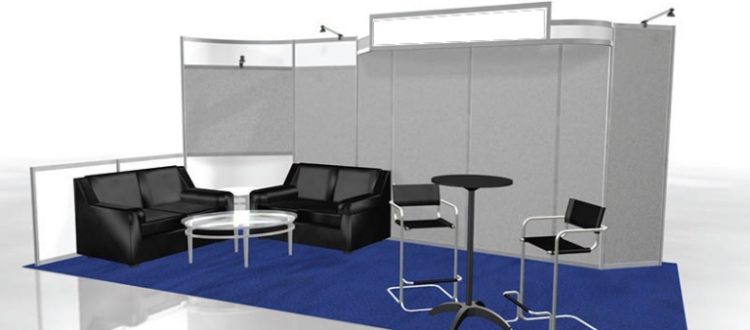For those who have zero experience on marketing and advertising of your products and services in trade show events, this is how you can plan and design your own trade show booth.
Question: We have never been to a trade show before. What advice do you have for trade show booths and graphics, etc?
There is a lot we can say to those who’ve never attended a trade show or purchased trade show graphics including roll up banner stands, x-banners, booth backdrops, literature displays, or table runners, but the foundation you lay before attending a trade show is the most important thing you need to focus on.
Your Valuable Marketing and Advertising Medium
As with any marketing and advertising, the message is the medium. What does this mean? This means that to successfully attract your target audience, you need to get inside their heads, find out what makes them laugh, cry, proud, greedy, hungry, thirsty, or any other range of emotions or desires that human beings exhibit.
As the late Gary Halbert once asked a group he was speaking to, “What is the key to selling hamburgers?” The audience answered this or that, but finally Gary revealed his earth-shaking answer. “A hungry crowd!” What you have to do is learn what makes your prospective customer hungry for what you have. This is the goal of marketing.
How Trade Show Marketing and Advertising is Done
 So how is that done? There is one sure fire way that you can learn what makes your clients “hungry.” That is to ask them. Then take your findings and write ads that appeal to that hunger. How do you know if the ads will work? You don’t. So you have to test them, over and over again in different venues if possible.
So how is that done? There is one sure fire way that you can learn what makes your clients “hungry.” That is to ask them. Then take your findings and write ads that appeal to that hunger. How do you know if the ads will work? You don’t. So you have to test them, over and over again in different venues if possible.
You may have a product that appeals to senior citizens or to youth, so you will likely already know that you’re not going to sell a lot of smart phone apps, for instance, to the geriatric crowd, nor will the younger crowd be terribly interested in things that make it easier to move around the house for the aging.
1. Know Your Market
So, first, know your market, know what magazines they read, what television shows they watch, where they eat and what types of foods they like, what kinds of cars are favored by seniors versus those favored by the younger set versus cars favored by middle aged professional types.
So, let’s say, for example, that you want to target your product, a protective cover for a popular smart phone that is very cool and comes in 72 different colors from pink to plum. Obviously, most seniors will care less about your “cool” phone covers. A few middle aged people might like the cases, but by and large you’re going to be targeting the children of affluent parents and young, hip professional types.
Your research will tell you what magazines are read by what age group, and for this marketing campaign, you’re probably not going to focus at all on newspapers, because most young urbans get their news online if they pay attention at all. You figure out which TV shows pull the strongest viewership of young, upwardly mobile professionals and high school students.
2. Do a Split test of your Ads
 For your initial test, you might want to run an ad in a magazine that has a pretty decent readership of young professionals, and one that appeals to high school and college students. You strategically place a couple of quarter page ads in both magazines with different messages and images, and attach a 25% off coupon if they purchase the covers online on your website.
For your initial test, you might want to run an ad in a magazine that has a pretty decent readership of young professionals, and one that appeals to high school and college students. You strategically place a couple of quarter page ads in both magazines with different messages and images, and attach a 25% off coupon if they purchase the covers online on your website.
With the ad, you also have a code which they must use to get the discount, and with that code, you can learn which ads pulled the best. If one ad out-pulls another by a significant margin, the winner becomes your “control.” You generate a new ad and repeat the process. The winner again is the control. Rinse and repeat.
Now, the beauty of the 21st century is that you don’t have to wait long for your results any more. Using various online advertising venues, such as the sidebar ads on Google or Bing, you can learn within a few days which headlines are working best to get buyers to your landing pages, then what copy on the landing pages are converting looky-loos to buyers.
So, once you’ve done this for a few months or longer if needed, you now have the foundation for your trade show booth and advertising. The winning headline(s) will be used the same at a trade show as they would online or on TV or in a magazine or on a billboard.
Conclusion
Once you know the size of the booth you’re renting, you can take that information to a company that specializes in trade show displays and booths and the various support graphics you’ll need, and you can create a booth that will not only attract potential clients, it will firmly establish you as a player in your market. Good luck!
Popular Posts:




